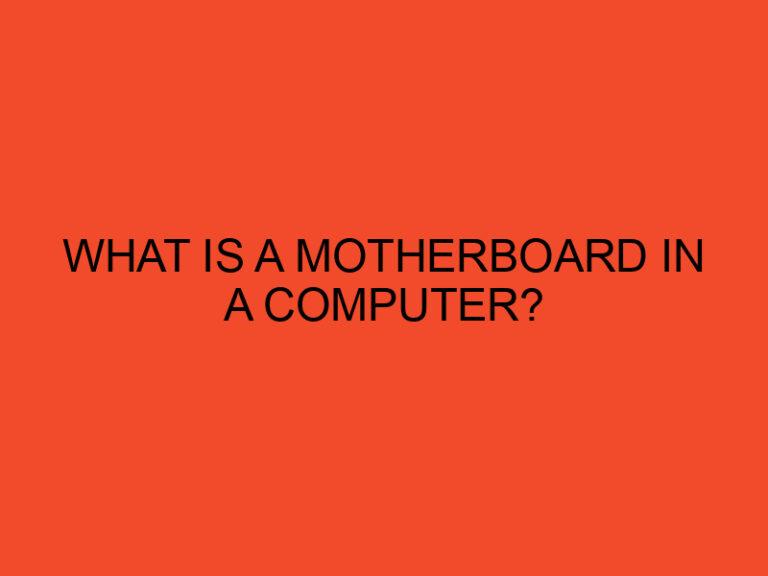“Hardware Acceleration: Unleashing Your System’s Potential
Artikel Terkait Hardware Acceleration: Unleashing Your System’s Potential
- The Rise Of The Intelligent Assistant: Navigating The World With AI By Your Side
- Decoding Emotions: A Deep Dive Into Sentiment Analysis
- The Astonishing World Of Image Recognition: From Pixels To Perception
- Algorithm Development: A Comprehensive Guide
- Context-Aware Computing: Weaving Technology Into The Fabric Of Our Lives
Table of Content
Video tentang Hardware Acceleration: Unleashing Your System’s Potential
Hardware Acceleration: Unleashing Your System’s Potential
In the ever-evolving landscape of computing, the demand for faster and more efficient processing is constantly increasing. Whether it’s rendering complex 3D graphics, encoding high-definition video, or running sophisticated simulations, software alone often struggles to keep pace. This is where hardware acceleration steps in, offering a powerful solution to offload computationally intensive tasks from the CPU to specialized hardware components. This article delves into the intricacies of hardware acceleration, exploring its benefits, various forms, limitations, and future trends.
What is Hardware Acceleration?
At its core, hardware acceleration is the process of using dedicated hardware, specifically designed for a particular task, to perform computations faster and more efficiently than a general-purpose CPU. Instead of relying solely on the CPU, which is designed to handle a wide range of tasks, hardware acceleration leverages specialized hardware units that are optimized for specific operations.
Think of it like this: imagine you need to build a house. You could try to do everything yourself, from laying the foundation to installing the roof. However, it would be much faster and more efficient to hire specialists – a foundation crew, framers, electricians, and plumbers – each with the specialized tools and expertise to complete their specific task. Hardware acceleration works on a similar principle, employing specialized "crews" (hardware units) to handle specific computational "tasks."
Benefits of Hardware Acceleration:
The advantages of hardware acceleration are numerous and far-reaching, impacting performance, energy efficiency, and overall system responsiveness.
- Increased Performance: This is perhaps the most significant benefit. By offloading tasks to specialized hardware, the CPU is freed up to handle other operations, resulting in a significant boost in performance. Tasks that would take minutes or even hours on the CPU can be completed in seconds or milliseconds with hardware acceleration.
- Reduced CPU Load: With specialized hardware handling the heavy lifting, the CPU workload is significantly reduced. This allows the system to remain responsive and handle other tasks without bogging down.
- Improved Energy Efficiency: Specialized hardware is often designed to perform specific tasks with greater energy efficiency than a general-purpose CPU. This can lead to lower power consumption, extended battery life (in mobile devices), and reduced heat generation.
- Enhanced User Experience: The increased performance and reduced CPU load translate to a smoother and more responsive user experience. Applications load faster, animations are smoother, and overall system responsiveness is improved.
- Enabling Complex Tasks: Some tasks, such as real-time ray tracing or advanced video encoding, are simply too computationally intensive to be handled effectively by the CPU alone. Hardware acceleration makes these tasks feasible and enables new possibilities in various fields.
Forms of Hardware Acceleration:
Hardware acceleration manifests in various forms, each tailored to specific computational tasks. Here are some of the most common types:

- Graphics Processing Units (GPUs): Arguably the most well-known form of hardware acceleration, GPUs are primarily designed for rendering graphics. However, their highly parallel architecture makes them well-suited for a wide range of computationally intensive tasks, including machine learning, scientific simulations, and cryptocurrency mining. Modern GPUs are programmable, allowing developers to leverage their processing power for general-purpose computing (GPGPU).
- Video Encoders/Decoders: Dedicated hardware units for encoding and decoding video are commonly found in smartphones, tablets, and computers. These units accelerate the process of compressing and decompressing video, enabling smooth playback of high-definition content and efficient video editing. Examples include hardware acceleration for H.264, H.265 (HEVC), and AV1 codecs.
- Audio Processing Units (APUs): APUs are designed to handle audio processing tasks, such as decoding audio files, applying audio effects, and mixing audio streams. They can significantly improve audio performance and reduce CPU load when playing music, watching movies, or using audio editing software.
- Field-Programmable Gate Arrays (FPGAs): FPGAs are programmable hardware devices that can be configured to perform specific tasks. This flexibility makes them well-suited for accelerating a wide range of applications, including network processing, image processing, and scientific computing.
- Application-Specific Integrated Circuits (ASICs): ASICs are custom-designed hardware chips that are optimized for a specific task. They offer the highest level of performance and energy efficiency but are also the most expensive and time-consuming to develop. ASICs are commonly used in specialized applications, such as cryptocurrency mining and network packet processing.
- Neural Processing Units (NPUs): These specialized processors are designed specifically for accelerating machine learning and artificial intelligence tasks. They excel at tasks like image recognition, natural language processing, and speech recognition, making them crucial for modern AI applications.

How Hardware Acceleration Works:
The process of hardware acceleration typically involves the following steps:
- Task Identification: The software identifies a computationally intensive task that can be accelerated by hardware.
- Data Transfer: The software transfers the necessary data to the dedicated hardware unit.
- Hardware Processing: The hardware unit performs the computations, leveraging its specialized architecture and algorithms.
- Result Retrieval: The hardware unit returns the results to the software.
- Integration: The software integrates the results into the overall application.
This offloading of tasks to specialized hardware allows the CPU to focus on other operations, resulting in a significant performance boost.
Limitations of Hardware Acceleration:
While hardware acceleration offers numerous benefits, it also has some limitations:
- Hardware Dependency: Hardware acceleration relies on the presence of specific hardware units. If the required hardware is not available, the software will fall back to using the CPU, resulting in reduced performance.
- Driver Support: Proper driver support is essential for hardware acceleration to function correctly. Outdated or incompatible drivers can lead to performance issues or even system instability.
- Software Compatibility: Not all software is designed to take advantage of hardware acceleration. Developers need to specifically program their applications to utilize the available hardware resources.
- Cost: Dedicated hardware units, such as GPUs and ASICs, can be expensive. This can increase the overall cost of the system.
- Development Complexity: Developing software that utilizes hardware acceleration can be more complex than developing software that relies solely on the CPU. Developers need to understand the intricacies of the hardware architecture and programming interfaces.
Future Trends in Hardware Acceleration:
The future of hardware acceleration is bright, with several exciting trends emerging:
- Increased Integration: We are seeing increased integration of specialized hardware units into CPUs and SoCs (System on a Chip). This allows for tighter integration and improved performance.
- AI-Driven Acceleration: The rise of artificial intelligence is driving the development of specialized hardware for accelerating machine learning tasks. NPUs and other AI accelerators are becoming increasingly common.
- Cloud-Based Acceleration: Cloud providers are offering access to hardware acceleration resources, such as GPUs and FPGAs, allowing users to leverage these resources without having to invest in their own hardware.
- Heterogeneous Computing: Heterogeneous computing, which involves using a combination of different types of processors (e.g., CPUs, GPUs, FPGAs) to perform computations, is becoming increasingly popular. This approach allows for optimal utilization of available hardware resources.
- Quantum Computing Acceleration: As quantum computing technology matures, we can expect to see the development of specialized hardware for accelerating quantum algorithms.
FAQ:
Q: How do I know if hardware acceleration is enabled on my system?
A: The method varies depending on the specific hardware and software. For graphics acceleration, you can typically check your graphics card driver settings. For video encoding/decoding, many video players and editing software programs will have options to enable or disable hardware acceleration in their settings.
Q: What happens if hardware acceleration is disabled?
A: If hardware acceleration is disabled, the CPU will handle the tasks that would normally be offloaded to the specialized hardware. This will result in reduced performance and increased CPU load.
Q: Can I add hardware acceleration to an existing computer?
A: Yes, in many cases. For example, you can add a dedicated graphics card (GPU) to a desktop computer to improve graphics performance. However, compatibility and power requirements should be considered.
Q: Is hardware acceleration always better than software processing?
A: Not always. While hardware acceleration generally offers better performance and efficiency for specific tasks, it’s important to consider compatibility, driver support, and software optimization. In some cases, well-optimized software running on a powerful CPU may perform better than poorly implemented hardware acceleration.
Q: What is the difference between hardware acceleration and software rendering?
A: Software rendering relies solely on the CPU to perform rendering tasks, while hardware acceleration utilizes a dedicated GPU to offload these tasks. Hardware acceleration typically results in significantly faster and smoother graphics rendering.
Q: Does hardware acceleration affect battery life on laptops?
A: It depends. If hardware acceleration allows tasks to be completed more quickly and efficiently, it can potentially extend battery life. However, if the hardware unit consumes a significant amount of power, it can reduce battery life.
Conclusion:
Hardware acceleration is a crucial technology for enhancing the performance, efficiency, and capabilities of modern computing systems. By offloading computationally intensive tasks from the CPU to specialized hardware units, it enables faster processing, reduced CPU load, improved energy efficiency, and a smoother user experience. As technology continues to advance, we can expect to see even more sophisticated and integrated forms of hardware acceleration, driving innovation in various fields, from gaming and multimedia to scientific research and artificial intelligence. Understanding the principles and benefits of hardware acceleration is essential for anyone looking to optimize their computing experience and unlock the full potential of their hardware.


